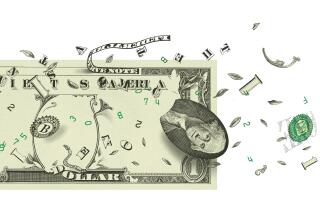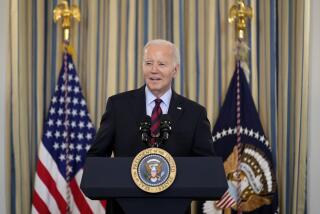Monetary Policy Isnât Where to Turn for Growth
The stock and bond markets were recently spooked, for a second time, by Federal Reserve Board Chairman Alan Greenspanâs statement that excess speculation causes imbalances that have the potential to seriously disrupt the economy.
Of course, nobody is really sure whether the stock market has been exhibiting âirrational exuberance,â is appropriately priced or has further short-run upside. I am quite bullish on equities over the longer term, partly because demography is so favorable. Scores of millions of baby boomers are moving into their peak earning and saving years, and they are facing the future with a much longer life expectancy than their parentsâ generation. As a result, they will need to save even more to finance a longer retirement, and much of that saving will go into equities.
*
Though he softened his remarks somewhat last week, Greenspan has indicated the Fed may have to act in order to head off an incipient rise in inflation. Certainly, the rate of inflation has been moderate for some time, after two rounds of disinflation in recent times. The first disinflation, from the double-digit annual levels of the late 1970s, got us down to the range of 4.5% for most of the 1980s. It was accompanied in 1981-82 by the worst recession since World War II, when the unemployment rate almost hit 11%.
After the long expansion of 1982 to 1990, a much milder recession ensued in the early 1990s (though it was certainly more severe in California). The downturn resulted from a variety of factors, including the oil shock after Iraqi President Saddam Hussein invaded Kuwait, the regulatory and tax excesses that helped worsen a cyclical real estate downturn, and the devastating defense contraction.
But there also was a deliberate attempt by the Fed--and central banks in other countries as well--to engineer a second round of disinflation. The reasoning--proper, in my view--was that we should not be satisfied with 4.5% inflation. After all, that was the level that caused even a conservative like President Nixon to freeze wages and prices in the early 1970s. Low and stable inflation is one of the foundations of maximizing long-term growth of the economy. But back in the 1970s, many economists and politicians argued that the cost of inflation was quite small, so why worry about it? If you have a recession as a byproduct of disinflating, you might as well avoid the pain and not worry about inflation.
Fortunately, we did not follow that advice. I was among those who argued we could disinflate at less cost--and should do so. In fact, that is what happened, and most of us are better off because of it. Inflation causes all sorts of problems that can take years to wring out of the system. For one, it causes imbalances in the economy that have to be adjusted--with inevitable dislocations that can ultimately lead to a recession. It raises the risk that monetary policy will miss the mark and lead to an economic slowdown. The tax code taxes purely inflationary gains. And so on.
It is no accident that we had increasingly frequent and severe recessions in the period from 1945--the end of World War II--through the early 1980s. When you examine those downturns, it is clear that the inflation rate at each point in the business cycle got progressively worse as the years wore on. However, in the last 15 years, we have had one mild national recession. Now that inflation is quite modest, it is far less likely that the Fed will overreact by any appreciable amount, which would inadvertently throw us into a recession.
*
The fact is that inflation is down but not out. Itâs less of a threat than it was only a few years ago because of fundamental changes in the U.S. economy--changes that make conventional inflation indicators suspect, at best. From modern inventory controls to outsourcing to new cost-saving technologies to globalization, firms today have many more ways to control costs in an increasingly competitive global environment.
That suggests that the place to look for more growth in the economy is not through a stimulative monetary policy, but to focus on a flatter, simpler tax code, less and more flexible regulation, reducing unnecessary litigation, and improving education and job training using market incentives. Sensible reforms in these areas are more likely to increase growth without worsening inflation and risking subsequent recession.
More to Read
Inside the business of entertainment
The Wide Shot brings you news, analysis and insights on everything from streaming wars to production â and what it all means for the future.
You may occasionally receive promotional content from the Los Angeles Times.






